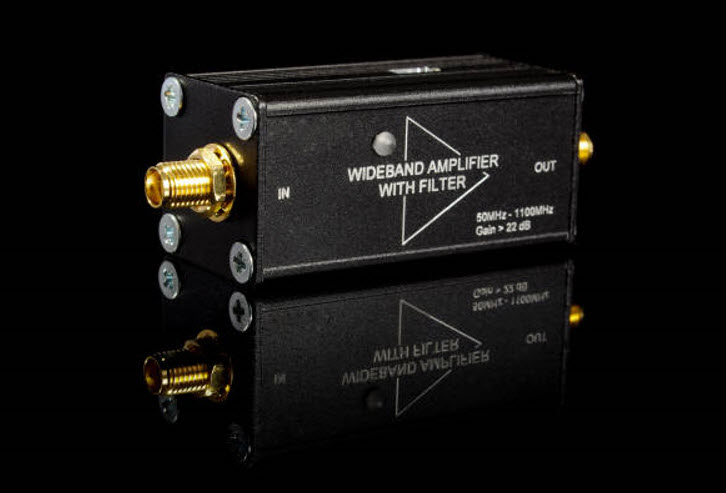Electromagnetic interference is a hindrance to any electric device. And as technology continues to advance, protecting such devices from unwanted interference is vital. But how do you do that? One answer comes in the form of RF shielded enclosures.
These enclosures are necessary across many industries, whether in healthcare or aerospace, as they help ensure that equipment runs smoothly and accurately. In today’s article, we will discuss what RF shielded enclosures are and how they operate. So be sure to pay attention, since you never know when you might actually need such a tool for your hardware!

What to Understand About RF Shielding
Before we can discuss RF shielding enclosures, we should first go over what entails it and what it protects from, namely: electromagnetic interference.
Electromagnetic Interference
Electromagnetic interference, or EMI (see more here) is when electromagnetic waves disrupt an electrical circuit. It is the buzzing sound on a radio or the static on a television. These are just a few of the examples of what can occur from EMI. EMI can come from a few sources, such as:
1. Natural Sources: Natural phenomena like lightning, solar storms, or the Earth’s magnetic field can create electromagnetic waves that interfere with the function of electronics.
2. Artificial or Man-made Sources: These come from everyday devices like microwaves or radios. They emit waves that can also disrupt electronic equipment.
How Does RF Shielding Work?
The simplest way to describe how RF shielding works is by comparing the function to a pair of sunglasses. Like sunglasses that block out the sun’s rays, RF shielding blocks out any disruptive electrical signals. It does this through a variety of different ways, such as:
- Reflection: RF shielding can reflect electromagnetic waves. This stops the unwanted energy from penetrating your device.
- Absorption: Some RF shields are capable of absorbing electromagnetic waves, transforming them into heat to disperse their energy harmlessly.
- Attenuation: This process of weakening electromagnetic waves as they pass through the shielding material is attenuation. This is insurance against any potential interference from electrical signals.
Taking these principles into consideration, we can begin to see how RF shielding is important for reliable and unimpeded electronic performance. Without it, such devices could easily become overwhelmed by noise and interference.
What are the Principles of their Design?
For the best effectiveness, the design and function of RF shielded enclosures follow these core principles:
- Seamless Construction: They have minimal leakage points, maintaining a barrier for maximum effectiveness.
- Material Thickness: They are made of thicker materials, to help provide superior defense.
- Electrical Continuity: They maintain the electrical connections throughout the enclosure, which prevents any interference from encountering electrical devices.
With these principles in mind, RF shielded enclosures ensure through construction, dense material, and electrical continuity that they are at their best efficiency when dealing with electromagnetic interference from other sources.
What are the Different Types of RF Shielded Enclosures?
Learn more about the different types at the website listed here: https://www.modusadvanced.com/rf-shielding
RF shielded enclosures come in a variety of different forms, each of them suited to certain needs, environments, or budgets. Here are some of the more common types.
1. Metal
Made from steel, aluminum, or copper, metal enclosures form a robust barrier against unwanted RF signals.
Characteristics
- They possess superior conductivity, which helps in blocking RF waves.
- They are long-lasting, and able to withstand harsh environmental conditions.
Advantages:
- Durability: They have great durability and can take a beating.
- Effectiveness: They have superior shielding, often favored and required in sensitive or high-stakes environments like military and aerospace facilities.
2. Conductive
These enclosures contain particles of silver, copper, or nickel. They tend to be lighter, and less costly than the others.
Characteristics:
- Made from copper, silver, or nickel
- Conductive to non-metallic surfaces
Advantages:
- Lightweight and Economic: They are the ideal choice for applications where weight is a concern, like in portable devices.
- Customizable: They can be easily applied to designs where more traditional metal enclosures would be impractical.
How to Choose the Right Enclosure
Selecting the right enclosure for your needs can involve a few simple steps. Firstly, start by assessing your needs. What kind of equipment are you looking for, or what’s the level of interference in your area?
Then go over the materials. Which ones are more conducive to what your environment is and the nature of interference around? Taking considerations like these into mind helps to better find the best RF enclosure for you and your needs.
Conclusion

As you can see, RF shielded enclosures are the literal shield against poor signal reception and electronic disruption. They are vital to the continued use and protection of electronic devices worldwide. In conclusion, this is the function, role, and overall design of RF shield enclosures. Hopefully, this article has helped you understand the role of this shield against negative reception and disruption.
